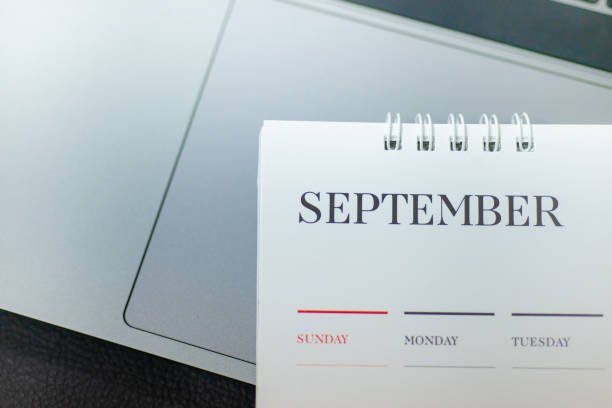The last glow of summer has faded, the back-to-school receipts are piled up, and a quick glance at your bank account sends a jolt of anxiety through you. If you’re feeling a “financial hangover” after a season of fun, travel, and necessary spending, take a deep breath. You are not alone. It is completely normal to feel off-track, and it’s a sign that you care about your financial well-being.
The good news is that September is the perfect time for a reset. Think of it as a second New Year—a chance to get organized, regain control, and build a strong financial foundation before the holiday season arrives. This isn’t about guilt or shame. This is a clear, actionable 30-day plan to understand your spending, realign your budget for today’s economy, and get your money working for you again.

First, Understand the “Why”: The Psychology of Overspending
Before we tackle the numbers, let’s address the human element. Overspending rarely happens because we’re “bad with money.” It’s often driven by powerful emotional triggers, especially during periods like summer. Recognizing these can be the key to lasting change.
- FOMO (Fear Of Missing Out): Seeing friends’ vacation photos and feeling pressure to create similar “core memories” can lead to unplanned trips and expenses.
- Emotional Spending: Using purchases to cope with stress, boredom, or even the sadness that summer is ending.
- “Last Chance” Mentality: The feeling that you need to squeeze in every last bit of fun before the season changes can lead to a surge in spending on events and activities.
Coping Strategy: Implement a 24-hour rule for any non-essential purchase over $50. This simple pause creates a buffer between the emotional trigger and the action, allowing you to make a more logical decision.

Your 30-Day September Budget Reset Plan
This plan is broken down into four manageable weeks. The goal is progress, not perfection.
Week 1: The Financial Autopsy (Track Everything)
This week is about gathering data, not making judgments. You can’t make a plan without knowing where you stand.
- Gather Your Data: Collect all your bank statements, credit card statements, and receipts from August.
- Categorize Every Dollar: Using a spreadsheet or a budgeting app, categorize every single expense. Be specific: separate “groceries” from “restaurants” and “takeout.”
- Face the Numbers: Tally up the totals for each category. This might feel uncomfortable, but this clarity is the most powerful step you can take. You now have a real, factual map of where your money went.
Week 2: The Budget Trim (Cut Back for 2025 Realities)
With high inflation and rising living costs, old budget advice doesn’t always work. We need to be strategic.
- Identify the “Big Three”: For most people, the easiest places to find immediate savings are Food, Subscriptions, and Entertainment.
- Implement “Inflation Hacks”:
- Food: Challenge yourself to a “pantry week” where you cook meals using only ingredients you already have. Recommit to meal planning to reduce expensive impulse buys and food waste.
- Subscriptions: Use a tool like Rocket Money or check your statements for recurring charges. Cancel any services you haven’t used in the past month—even if it’s just for a season.
- Entertainment: Look for free community events, explore local parks, and plan cozy movie nights at home instead of expensive outings.
- Adopt a 2025 Budgeting Method: Instead of a rigid, line-item budget, consider a “Value-Based Budget.” Ask yourself: “Does this expense align with my core values and goals?” This flexible approach helps you cut spending that doesn’t bring you real joy while allowing for things that do.
Week 3: The Rebuild (Tackle Savings & Debt)
Now that you’ve plugged the leaks, it’s time to start rebuilding. You can—and should—do both at the same time.
- Restart Your Emergency Fund: Even if it’s just $25 a week, set up an automatic transfer from your checking account to your savings account. Automating it makes it non-negotiable. The goal is to rebuild a cushion, however small, to handle future unexpected costs without derailing your progress.
- Address New Debt: If your overspending resulted in new credit card debt, make a plan. The “debt snowball” method (paying off the smallest balances first for quick motivational wins) is excellent for getting started. Pay the minimum on all cards and put any extra cash toward the smallest balance.
Week 4: The Reset & Automate (Set New Goals & Use Modern Tools)
End the month by looking forward and using technology to make your life easier.
- Set One Clear Goal for October: Don’t overwhelm yourself. Set one specific, achievable goal. Examples: “I will stick to my grocery budget” or “I will add $100 to my savings.”
- Leverage Modern Budgeting Apps: The right tool can automate much of this process.
- YNAB (You Need A Budget): Excellent for proactive, zero-based budgeting.
- Empower (formerly Personal Capital): Great for tracking net worth, investments, and spending all in one place.
- Rocket Money: A top choice for automatically identifying and canceling unwanted subscriptions.

How to Stay Motivated on Your Journey
Getting back on track is a marathon, not a sprint. Motivation is key.
- Celebrate Small Wins: Did you stick to your grocery budget for a week? Acknowledge it! Reward yourself with something free that you enjoy, like an uninterrupted hour to read a book or a walk in your favorite park.
- Schedule Weekly Check-ins: Spend just 15 minutes every Sunday reviewing your spending for the week. This regular habit prevents you from getting derailed and allows you to make small adjustments before they become big problems.
- Remember Your “Why”: Write down your biggest financial goal—whether it’s a debt-free holiday season, a down payment, or just a feeling of peace. Tape it to your bathroom mirror or make it your phone’s wallpaper as a constant reminder of what you’re working toward.
A Powerful Tool for Your Financial Reset
While budgeting apps are excellent, there’s a proven psychological benefit to physically writing down your goals and tracking your progress. This is why one of the most effective tools for a financial reset is a dedicated budget planner or a simple journal. It becomes a single, tangible place to manage your 30-day plan, track daily spending, and celebrate your wins. This hands-on approach can make your financial goals feel more real and keep you accountable. If you’re looking for a fresh start, you can find a wide variety of excellent and affordable budget planners on Amazon designed specifically for this purpose.
Your journey to a richer life on a budget starts here. Join our community of smart spenders at eliteonabudget.com.
